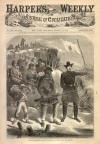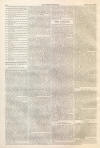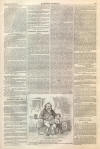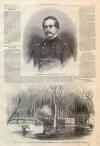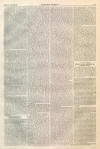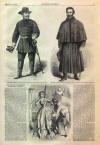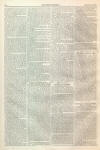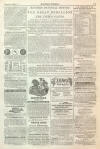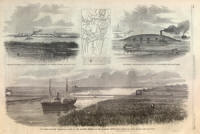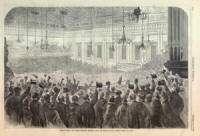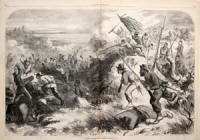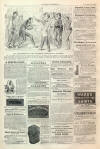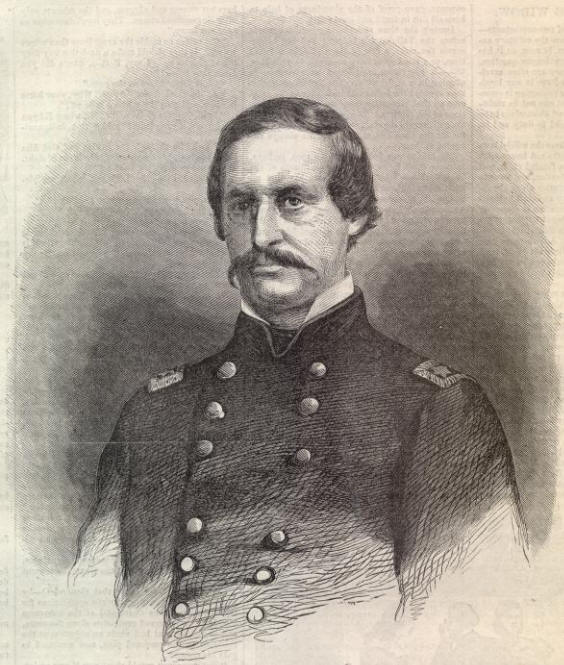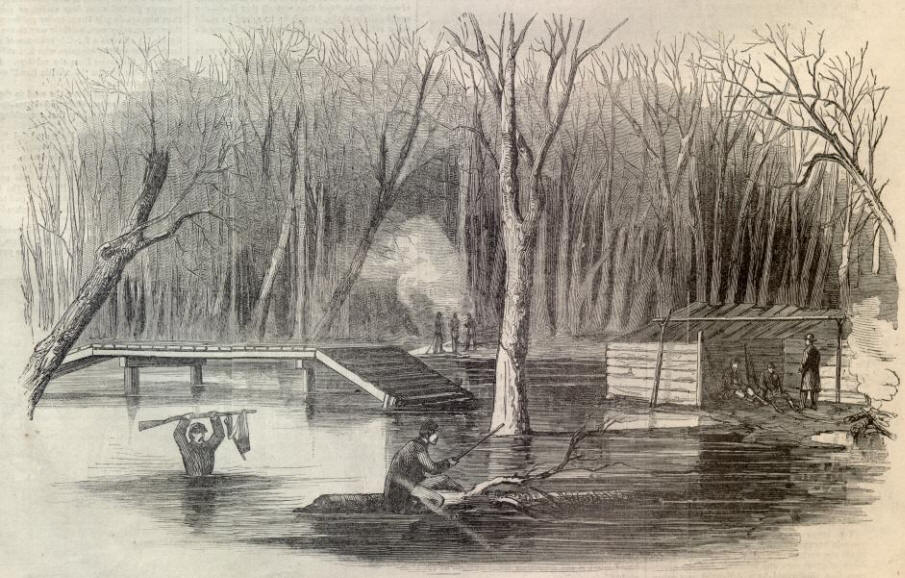|
This Site:
Civil War
Civil War Overview
Civil War 1861
Civil War 1862
Civil War 1863
Civil War 1864
Civil War 1865
Civil War Battles
Confederate Generals
Union Generals
Confederate History
Robert E. Lee
Civil War Medicine
Lincoln Assassination
Slavery
Site Search
Civil War Links
Civil War Art
Mexican War
Republic of Texas
Indians
Winslow Homer
Thomas Nast
Mathew Brady
Western Art
Civil War Gifts
Robert E. Lee Portrait
|
MAJOR GENERAL DAVID HUNTER, U.S.A.—[PHOTOGRAPHED BY
BRADY.]
THE
APPROACHES TO
SAVANNAH.
WE are indebted to several
correspondents in the Department of the South for the pictures which we publish
on page 164. The situation of the Nashville, lying ensconced close to the
railway line, is shown: she is temporarily blockaded in her refuge by the
Montauk, but before long other means will be devised to render her helpless.
Beulah Battery, a work of some pretensions, intended to impede the operations of
our gun-boats, is shown on the same page.
The new rebel iron-clad Turtle,
of which a picture is also given, was launched a few days since at Savannah. We
are not at liberty to disclose the means by which our picture was obtained. As
we said before, very little transpires either in
Charleston or Savannah which is
not soon known to our officers. The Turtle is said to be a very strong and
formidable vessel. She is 200 feet long, 58 feet wide; her hold is 7 feet deep.
She mounts eight 7-inch rifled guns, which are said to be of British manufacture
and of the Armstrong pattern.
Admiral Dupont will probably soon be able to give
a good account of the Turtle.
MAJOR-GENERAL HUNTER, U.S.A.
WE publish herewith a portrait of
MAJOR-GENERAL DAVID HUNTER, U.S.A., commanding the Department of the South.
General Hunter was born about the
year 1802, in the District of Columbia, and was appointed from thence to West
Point in 1818. He graduated in the infantry in 1822, and served eleven years
with his regiment. In 1833 he was appointed Captain of Dragoons. After three
years' service he resigned, and settled in Illinois, which State has ever since
been his home. In 1842 he was offered, and accepted, the post of Paymaster in
the army.
After the election of Mr. Lincoln
to the Presidency Captain Hunter was one of the army officers appointed by the
War Department to escort him to Washington. On the reorganization of the army he
was appointed Colonel of the Sixth Cavalry, and on 13th August, 1861,
Major-General of Volunteers, thus ranking
all the Major-Generals of
Volunteers except
Banks,
Dix, and
Butler. He had just previously taken part in
the
battle of Bull Run in command of his regiment, and received a severe wound
in the throat, which compelled him to quit the field. On his recovery he was
dispatched to the West, where
he served as second in command
under
Fremont in the latter's brief campaign in Missouri. General Hunter was one
of the first to denounce Fremont's incapacity; and, on the removal of that
officer, he succeeded him in command of the army. He had no opportunity to
distinguish himself, however, as
he was himself very shortly
afterward superseded by
General Halleck. On his return to
Washington he soon
found a vacancy in the command of the troops at Port Royal, vice "Port Royal"
Sherman, who was removed. While in this command he achieved no military
triumphs; but he attracted
more attention than any other man
in the country by issuing a short order
emancipating all the slaves in the
Department of the South. This order was
revoked by the President, and General
Hunter returned home in consequence.
After a brief holiday he was
again assigned to the command of the Department of the South, and is now at Port
Royal. When the attack is made upon the city of Charleston or Savannah, it is
expected that General Hunter will direct the operation of the land-forces.
General Hunter, though sixty
years of age, is a veteran of remarkable vigor, energy, and iron will. He
tolerates no insubordination in his command, and is as much feared by his
officers as by the enemy. Bred in extreme pro-slavery views, the war has
converted him into a firm abolitionist. He has always been in favor of arming
the negroes, and has now quite a little negro army under his command at Port
Royal. "Black Dave," as the soldiers call him, will make or mar himself in the
course of the next ninety days.
The Tribune correspondent states
that General Hunter has organized an expedition of 5000 negro troops to
penetrate one of the most thickly-populated districts of the Department of the
South with a view to rouse the slaves. The invaders are to carry extra muskets,
and are to be supported by an adequate force of regular troops. Though the
scheme in itself seems feasible, the story is generally discredited at the
North.
SMITH'S BRIDGE.
ON this page we illustrate THE
OVERFLOW OF THE TUSCUMBIA RIVER, near Corinth, Mississippi, from a sketch by Mr.
Flournoy of the Second Iowa Volunteers. Mr. F. writes: "CORINTH, MISSISSIPPE,
Feb. 17, 1863. "Please find inclosed a guard-post at Smith's Bridge, 4 1/2 miles
northwest from Corinth, Mississippi, across the Tuscumbia River, on the road
leading from this place to Kossuth. To use the native expression, the 'river's
riz' and flooded the 'bottom' or swamp, which at this place
is some 2 1/2 miles in
width, and in order to reach the post it is necessary to 'take the water' about
'waist deep.' The shelter, or 'shebang,' as the boys term it, is located upon
the only dry spot, about 10 feet square, on the east side of the stream. There
is a corresponding knoll on the opposite side. "With respect, yours truly,
"SILAS FLOURNOY, "Company I, Second Iowa Infantry."
THE OVERFLOW OF THE TUSCUMBIA RIVER NEAR
CORINTH,
MISSISSIPPI.—[SKETCHED BY MR. FLOURNOY OF THE SECOND IOWA VOLUNTEERS.]
|
